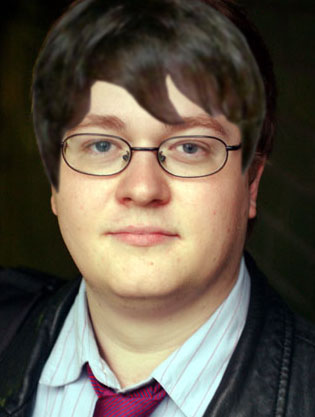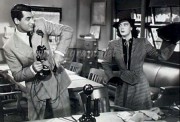The Johann Hari way to photoshop an interview
Brian Whelan’s excellent expose of Johann Hari’s, shall we say, “creative” way with direct quotes and interviews – which itself follows another Hari expose here – is quite rightly receiving a lot of play on the mediablogs, such as FleetStreetBlues.
Most of the commentators have used the phrases “cut ‘n’ paste” and “mash-up” to describe what Hari has done, which is fine as far as it goes, but I think a more accurate analogy comes from the wonderful world of Photoshoppery.
Those of us who use the digital image editing program Photoshop for more than just the occasional colour correction or cut-out and drop shadow know there’s an incredibly handy tool called the Clone or commonly, because of its icon in the toolbar, the “Rubber Stamp”. This handy little gubbins lets you copy an area from one part of a picture and then “stamp” it on to another area. In the early incarnations of Photoshop, this was fairly crude – often the colour of the pixels in the copied area didn’t quite match those in the target area, so you had to massage them with, say, the smudge tool to make the transplant more seamless.
So far, so cut’n’paste. But over the years, this little tool has become increasingly sophisticated, to such an extent that Photoshop itself does the mixing, reading the pixels of the copy to those with the target and making whatever colour adjustments are necessary to either to make the transplant truly seamless, to the extent it would take a real expert to find where the join is. And it can do this with areas copied from another picture and stamped into another one, too: the adjustments are done automatically.
It would appear that Hari is more than just a bog standard cut’n’paste merchant. He is master of the photoshopped quotation, able to cut quotes from a variety of sources and paste them seamlessly into one coherent whole. The tenses match, the flow of the quotations remain unimpeded: they really do read like the direct reporting of what a person said at a single time and a single sitting at a single place. Except of course that it isn’t and they weren’t.
Astonishingly, Hari doesn’t seem to grasp what might be wrong with this in a report which purports to be the subject’s thoughts and behaviour at a single time and a single place:
My test for journalism is always – would the readers mind you did this, or prefer it? Would they rather I quoted an unclear sentence expressing a thought, or a clear sentence expressing the same thought by the same person very recently? Both give an accurate sense of what a person is like, but one makes their ideas as accessible as possible for the reader while also being an accurate portrait of the person.
Well, yes, Mr Hari, I guess most of us think there is nothing wrong with cleaning up the occasional grammatical lapse or deleting all the umms and errrs that occur in everyday extempore speech. Most British journalists would also have no qualms about reordering sentences within a direct quote to help make the sense flow, although our US counterparts tend to be more queasy about doing this.
But actually lifting quotes from a subject’s previous interviews, inserting them into other quotes and trying to pass it off all as what that subject said at a single interview is wrong. And it’s wrong for the same reason that photoshopped pictures purporting to show a single event in time and place are wrong.
An interview is after all a picture in words of a single event, if you like. It purports to be a faithful rendition of what was said and, in the case of the personalised “intellectual portraits” which Hari favours, what was done by the subject at a single point of time, just as a press photo should show what happened at a single point of time. To doctor either, either to make them more newsworthy or, in Hari’s disingenuous words, “make their ideas as accessible as possible” is nothing short of deceit.
Hari may well claim that none of his subjects have complained. Perhaps none of them noticed or, if they did, didn’t care. But then they’re not the ones who are really being deceived. It’s his readers to whom Hari owes an apology.
UPDATE: Nice to see the old Downfall Hitler meme is alive and well on YouTube and being put to good use.
UPDATE II: And of course The Daily Mash has got into the act.

